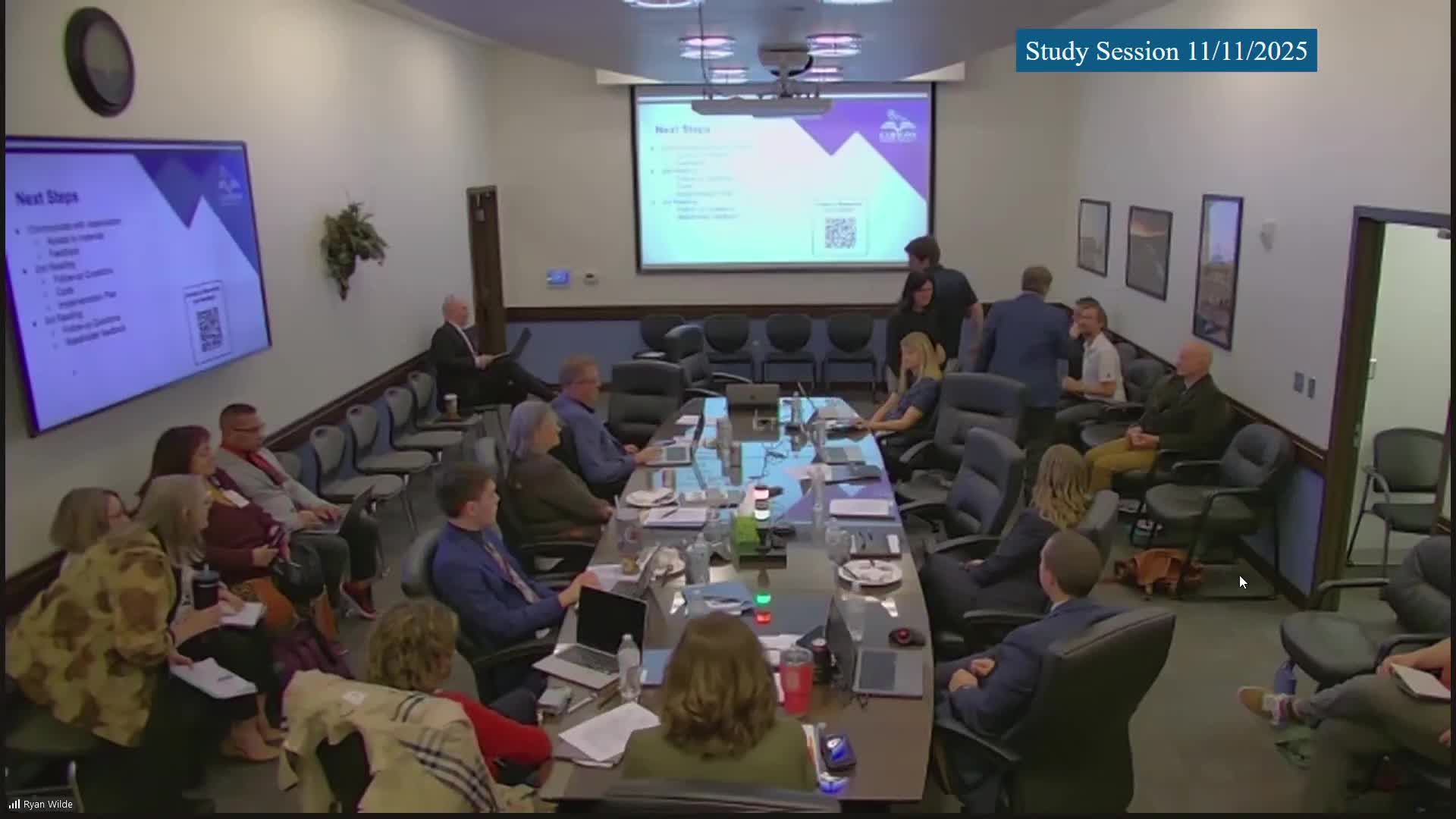Canyons district reports student achievement and growth above state averages; board flags graduation and attendance for follow-up
November 12, 2025 | Events, Canyons School District, Utah School Boards, Utah
This article was created by AI summarizing key points discussed. AI makes mistakes, so for full details and context, please refer to the video of the full meeting. Please report any errors so we can fix them. Report an error »

The Canyons Board of Education on Nov. 11 received the district’s annual indicators report from Dr. Hal Sanderson, director of research and assessment, who said many achievement metrics remain above the state while noting areas for continued attention.
Sanderson told the board that district results on end‑of‑year RISE assessments typically run about 5–10 percentage points above the state on several measures and that median student growth is likewise above the state average. "You can see that our results are typically around 5 to maybe 10% above the state depending on the year," he said, highlighting steady year‑to‑year progress on several indicators.
He reviewed multiple indicators including RISE outcomes, ACT composite scores, benchmarks tied to college readiness (NCT benchmarks), chronic absenteeism and the percentage of students who received an F in a grading year. He noted that while some measures show slight downward trends, most remain above state averages and that the district will establish a new baseline as standards shift.
Board concerns: Board members asked why the district’s graduation rate dipped in the most recent year and discussed related factors such as chronic absenteeism, credit recovery, student wellness and inconsistent grading policies across high schools. One board member urged caution about artificially inflated grades and called for policies that ensure grades reflect actual learning, saying anecdotal reports exist of students being passed despite minimal attendance.
Next steps: Members proposed a roundtable or future agenda item to dive deeper into attendance strategies, grading consistency and targeted interventions. Sanderson and the superintendent suggested using state data gateway resources for comparisons and agreed to follow up with more granular disaggregated data upon request.
What was not resolved: No formal actions or policy changes were taken at the meeting; board members asked staff to return for a deeper review of graduation causes and possible policy responses.
Sanderson told the board that district results on end‑of‑year RISE assessments typically run about 5–10 percentage points above the state on several measures and that median student growth is likewise above the state average. "You can see that our results are typically around 5 to maybe 10% above the state depending on the year," he said, highlighting steady year‑to‑year progress on several indicators.
He reviewed multiple indicators including RISE outcomes, ACT composite scores, benchmarks tied to college readiness (NCT benchmarks), chronic absenteeism and the percentage of students who received an F in a grading year. He noted that while some measures show slight downward trends, most remain above state averages and that the district will establish a new baseline as standards shift.
Board concerns: Board members asked why the district’s graduation rate dipped in the most recent year and discussed related factors such as chronic absenteeism, credit recovery, student wellness and inconsistent grading policies across high schools. One board member urged caution about artificially inflated grades and called for policies that ensure grades reflect actual learning, saying anecdotal reports exist of students being passed despite minimal attendance.
Next steps: Members proposed a roundtable or future agenda item to dive deeper into attendance strategies, grading consistency and targeted interventions. Sanderson and the superintendent suggested using state data gateway resources for comparisons and agreed to follow up with more granular disaggregated data upon request.
What was not resolved: No formal actions or policy changes were taken at the meeting; board members asked staff to return for a deeper review of graduation causes and possible policy responses.
View the Full Meeting & All Its Details
This article offers just a summary. Unlock complete video, transcripts, and insights as a Founder Member.
✓
Watch full, unedited meeting videos
✓
Search every word spoken in unlimited transcripts
✓
AI summaries & real-time alerts (all government levels)
✓
Permanent access to expanding government content
30-day money-back guarantee


